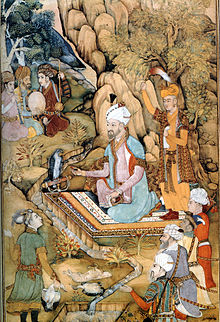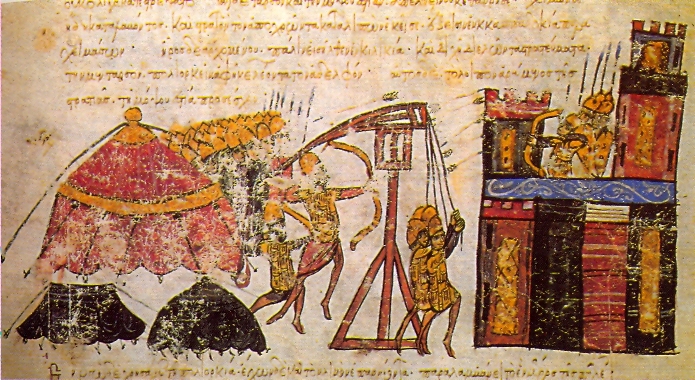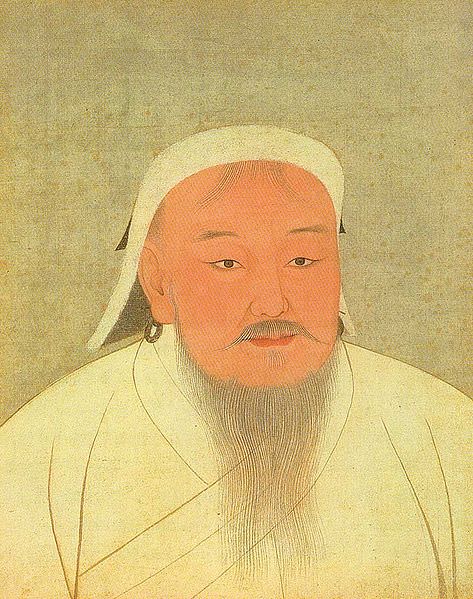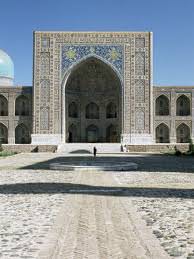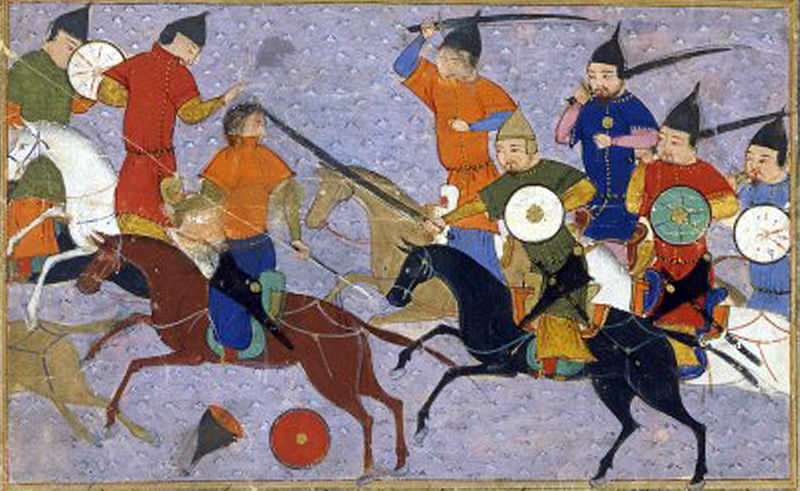Kings, Conquerors, and Gods: The Autobiographies of Timur, Isma’il, and Babur
In 1360, a hundred years after the finalization of Mongol conquest, the most famous of these post-Genghisid rulers emerged in Kesh, not far from Samarqand. Timur Barlas, anglicized as Tamerlane, pursued a life-long career of warfare, first establishing himself in the ranks of the regional amir Kurgen and eventually awing the entire region from the Punjab to Cairo and Constantinople through his conquests. Like his predecessor Genghis, Timur has since been a hotly debated figure.
A Study on the Effects of Ghazan Khan’s Reformative Measures for the Settlement of the Nomadic Mongols (1295-1304)
The Ilkhanid’s sovereignty in Iran was part of the great empire under the command of Genghis Khan and his successors. It extended broadly from Korea to Eastern Europe and China to Iran and Syria. Such conquest originated from Mongolia (Middle Asia), which was the original land of these homeless nomadic people. They lived by shepherding, hunting and sometimes looting nearby tribes or civilized centers.
Tartars on the Frontiers of Europe: The English Perspective
The relevant records in English chronicles reveal little about the actual historical events of the East Central European region in the thirteenth century but say a great deal about the perception and knowledge of a core country about the periphery of Western Christianity.
The Mongol Intelligence Apparatus: The Triumphs of Genghis Khan’s Spy Network
Genghis Khan was a great military strategist, but his unparalleled ability to run intelligence operations was the key to his victories.
The Trebuchet
Recent reconstructions and computer simulations reveal the operating principles of the most powerful weapon of its time
Muhammad and Jenghiz Khan Compared: The Religious Factor in World Empire Building
The fact that the Arab society had a strong nomadic component and the Mongol society was firmly based on pastoral nomadism makes this comparison even more interesting.
Scourges of God: A General Comparison of Tamerlane and Hulagu in the History of Baghdad
The sacking of Baghdad earned both Hulagu and Tamerlane the epithet ‘scourge of God’, though it will be shown that Hulagu‟s reputation has suffered more, acting as the scapegoat for later failings of Muslim empires.
Fools, Devils, and Alchemy: Secular Images in the Monastery
The fool is one of the most popular and stable character types throughout cultures and times. This is especially true of medieval Europe. The fool, sometimes a jester, sometimes a clown or a trickster, is always recognizable through his abnormal appearance.
The Indigenous Christians of the Arabic Middle East in an Age of Crusaders, Mongols, and Mamlūks (1244-1366)
The chronological period of study is highlighted by the usurpation of the Ayyūbid-ruled Sultanate by the Baḥrī Mamlūks, while the two most important political-military events in the region were the collapse of the Crusader States and the invasion of the Mongols. This thesis will examine how events impacted on the nine Christian Confessions, treating each separately.
The Effects of the Mongol Empire on Russia
This paper looks at the Mongol Empire’s impacts on Russia in terms of religion, art, language, government, and the ultimate rise of Moscow.
Prolegomena to the Ju-nan i-shih: A Memoir on the Last Chin Court Under the Mongol Siege of 1234
Ju-nan i-shih is a reminiscence on the events at the refuge Chin capital of Emperor Ai-tsung (r. 1224-1234) at Ts’ai-chou, Honan, during the Mongol siege of July 1233 to February 1234, when it capitulated.
The Forgotten Text of Nikolai Golovin: New Light on the Igor Tale
Mann argues that a rare text of the Skazanie o Mamaevom poboishche comes from an early, fifteenth-century redaction that scholars could never locate—a redaction that is the prototype for all the redactions that have been studied heretofore. He maintains that unique parallels between this redaction and the Slovo o polka Igoreve support the hypothesis that the Igor Tale was an oral epic song in a tradition that actually continued into the fourteenth and fifteenth centuries, when oral tales about the Kulikovo Battle (1380) were composed. He places the new parallels in the context of other evidence for oral composition in the Igor Tale.
Movie Review: Mongol
Set in 1192, Mongol tells the tale of the Mongolian Steppe and the rise of Temüjin, who would later become Genghis Khan, one of the most feared and respected warriors of the medieval world.
Causes of Piracy in Medieval Japan
The scope of the study spans two distinct phases of piratical activity by Japanese marauders known as the wako, the first lasting from 1223 to 1265 and the second from 1350 to the early 1400s.
Biological Warfare at the 1346 Siege of Caffa
On the basis of a 14th-century account by the Genoese Gabriele de’ Mussi, the Black Death is widely believed to have reached Europe from the Crimea as the result of a biological warfare attack.
How did Persian and Other Western Medical Knowledge Move East, and Chinese West? A Look at the Role of Rashīd al-Dīn and Others
This paper looks specifically in this larger context at one key aspect of the western knowledge arriving in China, Islamic medicine, which included major Ancient Greek, Roman, Byzantine and Syrian Christian as well as Persian and even Indian components, making it truly international, and speculates as to how it got there.
To Protect, Serve, and Sell Out: The Mongol Imperial Guard and the Roman Praetorian Guard
The first incarnation of the Mongol Imperial Guard differed from the Roman Praetorians, who were, from the moment of their origins, seen as an “elite unit” and an “important arm of the state and a formidable personal military power base.” The Mongol Imperial Guard under com- mand of Chinggis Qan, established in 1206, could be seen in light somewhat contrasting to that of the Romans.
Imagining Samarkand: Fruitful Themes in 13th-16th Century Literature on a Silk Road City
… Samarkand was seen as the last great urban Islamic stop.4 Perhaps because of this, the period between the Arab invasion of Samarkand and the Mongol invasion in 1220 fomented many of the mythologies about the city which will feature prominently in this paper.
The Mongol War Machine: How were the Mongols able to forge the largest contiguous land empire in history?
In the early 13th century a young Mongol chieftain called Temujin united the nomadic steppe peoples of Mongolia through conquest in order to fulfill his vision of a great nation.
The Eagle Returns: Evidence of Continued Ismaili Activity at Alamut and in the South Caspian Region following the Mongol Conquests
The catastrophic Mongol incursions into the heart of the Muslim world during the thirteenth century left a path of death and destruction in their wake.
Friar Benedict the Pole of Vratislava his mission to Mongolia and his narrative (1245-1247)
This is a study of the life and achievements of the Franciscan, Benedict the Pole of Vratislavia, who was sent with an Apostolic mission by Pope Innocent 17 in 1245 to the Great Khan of the Mongols.
The viaggio in Inghilterra of a viaggio in Oriente: Odorico da Pordenone’s Itinerarium from Italy to England
Odorico da Pordenone was a Franciscan Friar who, in the wake of the thirteenth-century expansion of the Mongolian empire, travelled to the court of the Great Khan at Khanbalik (modern Beijing).
Sacred Kingship among the Peoples of the Steppes
eurThe vast belt of the Steppes, located between the Hungarian plains and the Great Wall of China,
runs along the southern edge of the Eurasian arboreal zone. Starting in the 1st millenium B.C. this region has been inhabited by Iranian, Hunnish, Turkish and Mongol mounted nomads who, at various times, unified a large portion of the Steppes into a single empire.
Biological Exchange and Biological Invasion in World History
For millions of years, most species stayed home. Geographic barriers, such as oceans and mountain chains, inhibited migrations and divided the earth into distinct biogeographical provinces. Only birds, bats, and flying insects bucked the trend consistently.
Silk Roads or Steppe Roads? The Silk Roads in World History
Modern historiography has not fully appreciated the ecological complexity of the Silk Roads. As a result, it has failed to understand their antiquity, or to grasp their full importance in Eurasian history.
